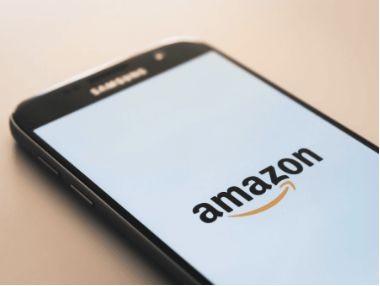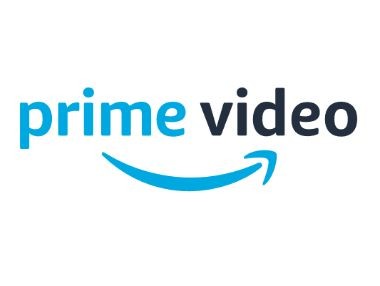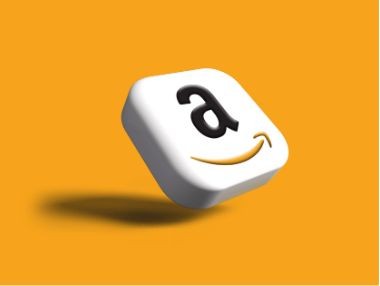Amazon has managed to establish itself as a major worldwide player that has transformed the way we live and shop. Beyond only delivering products, it also produces other technologies like "Alexa" and offers a media streaming service. Among the most well-known brand names in the world, Amazon has grown rapidly. It has been so successful that, like "Google," it is now frequently employed as a verb in ordinary speech. But like many other modern-day megacorporations, like Google and Facebook, Amazon began as a small company and worked its way up to become a massive one.
This essay will examine the background of the corporation and the rags-to-riches tale of Amazon.
The Origins of Amazon

A young Princeton graduate named Jeff Bezos formally launched Amazon on July 5, 1994, under the name "Cadabra" (as in abracadabra) in a garage space in his Bellevue, Washington rental home. But, due to Cadabra's unattractive resemblance to the term "cadaver," Bezos changed the name to Amazon Inc. after only a few months (A&E Television Networks, 2015).
About a year later, the Amazon website was formally launched, serving as an online bookseller operating out of that same garage space and shipping to all 50 US states as well as 45 other countries. In its initial years of operation, Amazon experienced losses similar to those of many other businesses. But perhaps the biggest indication that the business was headed for success was the change from quarter three (July 1–September 30) to quarter four (October 1–December 31) in 1996.
Over that period, Amazon saw a $100,000 drop in quarterly losses and an increase in revenues from $4.2 million to $8.5 million (Wilhelm, 2019). This was encouraging because they were able to more than quadruple their revenue while reducing their losses, even though they were still facing losses of about $2.2 million overall throughout the quarter. In the last quarter of 2001, following a busy Christmas shopping season, Amazon was able to turn a profit for the first time since it had expanded beyond books in 1998 (ABC News, n.d). From there, 2003 marked the beginning of Amazon's first profitable year, with net profits rising from $3 million in the final quarter of 2002 to $73 million in the final quarter of 2003 (Hansell, 2004), resulting in $35 million for the full year, up from a loss of $149 million the year before.
Ultimately, there were ups and downs along the way for Amazon as they grew from a small online bookshop to one of the world's largest corporations, but their dedication to innovation has made them one of the most prosperous businesses today.
The Introduction of Amazon Prime

"Amazon Prime," one of Amazon's most well-known and lucrative programs, was originally made available in February 2005. When Amazon Prime first launched as an unlimited two-day delivery subscription for $79 a year, it didn't attract many customers because online shopping was still a relatively new idea and some people still thought subscription pricing were too high. Nonetheless, following a few years of service expansion and minor adjustments, like adding the Prime Video component to the subscription, Amazon began to experience significant growth with its subscription service in the 2010s.
Based on information from Search Logistics, Amazon's net sales increased by about $29 billion between 2013 and 2021, reaching $31.77 billion in net sales of Amazon Prime by that year. Furthermore, according to Search Logistics (2022) "Amazon subscription value has more than doubled since 2017". When COVID-19 was at its worst, there was a surge of subscribers from 2019 to 2021 of about 28 million, which was mostly to blame for this.
According to Search Logistics' forecast, there would be 168.3 million subscribers worldwide by 2025, based on the historical trend of the current year. Not only have the membership sales contributed to higher profitability, but the volume of purchases made by those prime members has also aided in Amazon's growth. Considering how quickly things work and how convenient free delivery is, Amazon has been able to make a lot more money annually from the purchases made by Prime members than by non-members.
According to a poll conducted in 2021, Amazon Prime subscribers spent an average of $1,400 year, compared to just about $600 for non-members (Chang, 2021). The introduction of Amazon Prime as a subscription service didn't have the immediate effects that Bezos and the other Amazon staff members had hoped for, but thanks to more recent growth strategies and the notion that online shopping will become more commonplace, Amazon Prime has been a huge success and has been crucial to the company's expansion.
Amazon's Future

Given Amazon's current level of success and their ongoing ambition to diversify into other markets, the only question that remains is: What will happen to Amazon next? Amazon is primarily recognized for their delivery services, so streamlining their delivery method is the most noteworthy growth they are attempting to achieve. Even though Amazon currently, depending on the user's region, offers a rather quick delivery time, they are constantly working to improve delivery times as technology develops. This includes Amazon Prime Air, their most recent addition of a drone delivery experiment system near Lockeford, California. Air drones will be able to distribute within a short radius of the Amazon plant to nearby villages through this trial program in a matter of hours (Amazon Staff, 2022).
Apart from this novel initiative, Amazon has also investigated Amazon Scout, an entirely electric and self-driving delivery system (Patrao, 2022).It's still uncertain if either of these initiatives will become the "next big thing," but it's certain that Amazon will keep experimenting with new technologies to improve their delivery processes. Amazon is looking for ways to grow by partnering with other businesses and purchasing others, in addition to developing their delivery networks.
While Amazon has established several agreements with well-known companies like Kohl's and Best Buy, its recent collaboration with Grubhub may result in their dominance of another delivery service: groceries and food. The collaboration between Grubhub and Amazon has the potential to completely change the food and grocery delivery sector, even if neither of these two of the biggest businesses in their respective fields have seen any real development as of now. Although the company's collaboration with Grubhub was significant, Amazon has also been aggressively growing through acquisitions.
For instance, Amazon just paid $8.5 billion to acquire the well-known media production company MGM (Metro-Goldwyn-Mayer) Studios, which is well known for the "Rocky" movies and "Rain Man," among other works (Maas, 2022). Amazon intends to produce TV and film projects based on well-known MGM brands, such as "Legally Blonde" and "Robocop," following its recent acquisition of MGM (PYMNTS, 2023). It's evident that Amazon intends to keep expanding as a company through its experiments with more sophisticated delivery systems, smart commercial alliances, and acquisitions, even if no one can predict what the future holds.
Citations for Works
ABC News Network, ABC News, "Net Sales for Amazon, 1996–2022."
The Marketplace Pulse "Amazon Commences Operations."
A&E Television Networks, History.com, Nov. 4, 2015 "Amazon Prime Statistics: Usage, Revenue, and Subscribers, 2023."
QueryLogistics, April 5, 2023 David Chang. "This Is How Much an Average Amazon Prime Member Spends a Year."
The Motley Fool, The Motley Fool's Ascent, July 12, 2022,



